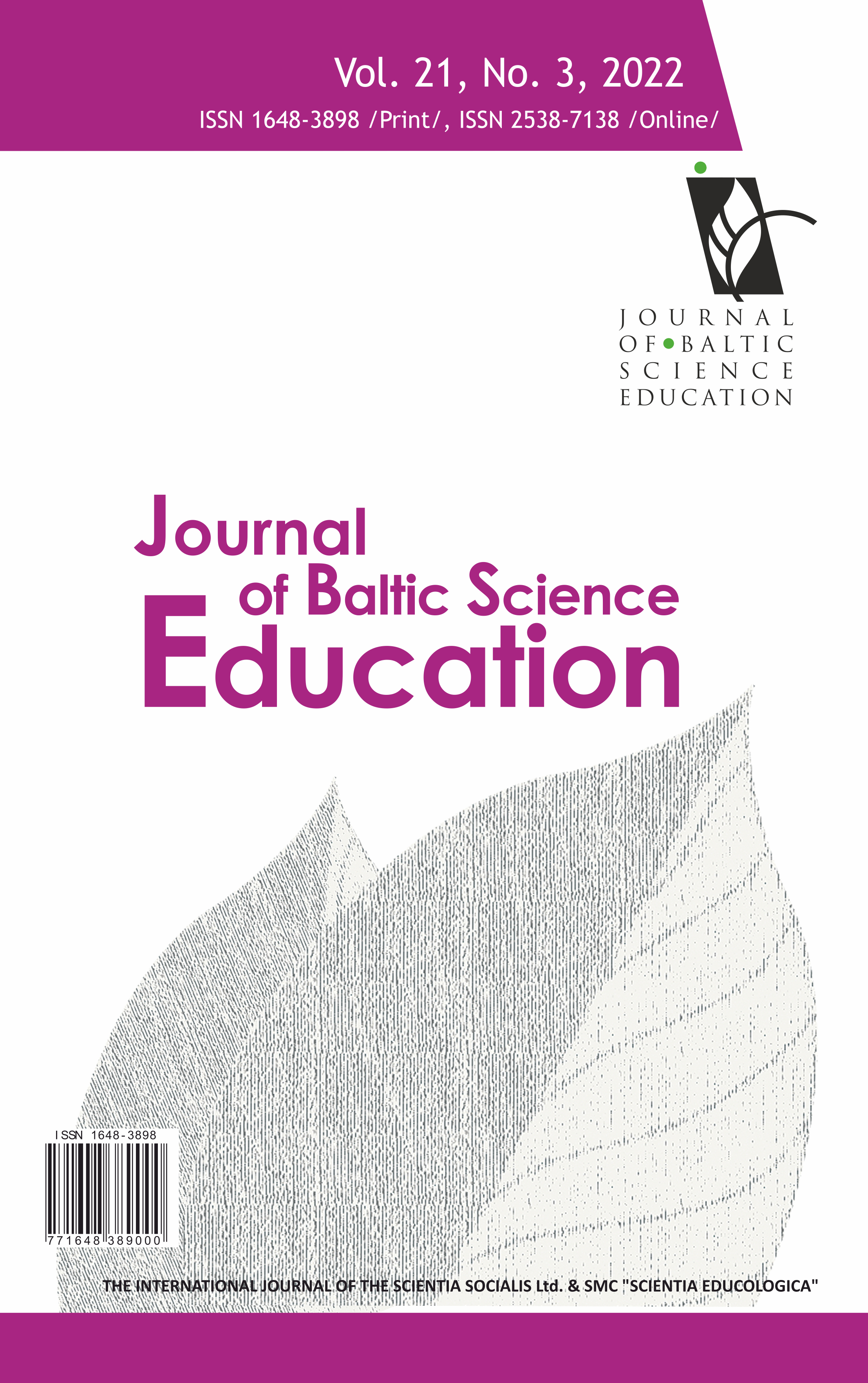UPPER SECONDARY SCHOOL STUDENTS’ CONCEPTIONS OF CHEMICAL EQUILIBRIUM IN AQUEOUS SOLUTIONS: DEVELOPMENT AND VALIDATION OF A TWO-TIER DIAGNOSTIC INSTRUMENT
UPPER SECONDARY SCHOOL STUDENTS’ CONCEPTIONS OF CHEMICAL EQUILIBRIUM IN AQUEOUS SOLUTIONS: DEVELOPMENT AND VALIDATION OF A TWO-TIER DIAGNOSTIC INSTRUMENT
Author(s): Peng He, Changlong Zheng, Tingting LiSubject(s): Social Sciences, Education, School education, Pedagogy
Published by: Scientia Socialis, UAB
Keywords: chemical equilibrium in aqueous solutions; alternative conceptions; two-tier multiple-choice items; Rasch modeling;
Summary/Abstract: Student understanding of chemical equilibrium in aqueous solutions (CEAS) plays a vital role in their upper secondary school chemistry learning and everyday life. Diagnosis of students’ alternative conceptions (ACs) of the CEAS will provide teachers with valuable information to make instructional decisions on student learning. This study aims to develop and validate an instrument to diagnose students’ ACs about the CEAS, including ionization equilibrium, water self-ionization equilibrium, the equilibrium of salt hydrolysis, and precipitation and dissolution equilibrium. Using Treagust (1998)’s development framework, we have developed 25 two-tier multiple-choice items for the CEAS diagnostic test. After completing the corresponding courses, 750 Grade 11 students from five public schools responded to the CEAS diagnostic test. Rasch modeling approach was employed to provide psychometric properties of the CEAS diagnostic test consisting of one-dimensionality, reliability, and validity. This study identified 15 ACs toward the CEAS. This study found that most students performed better on concept tiers rather than reasoning tiers. In addition, students have difficulties in connecting acidity, solubility, ionization, and chemical reaction and in using mathematical thinking to do transformation between concentration, equilibrium constant, and pH value.
Journal: Journal of Baltic Science Education
- Issue Year: 21/2022
- Issue No: 3
- Page Range: 428-444
- Page Count: 17
- Language: English

